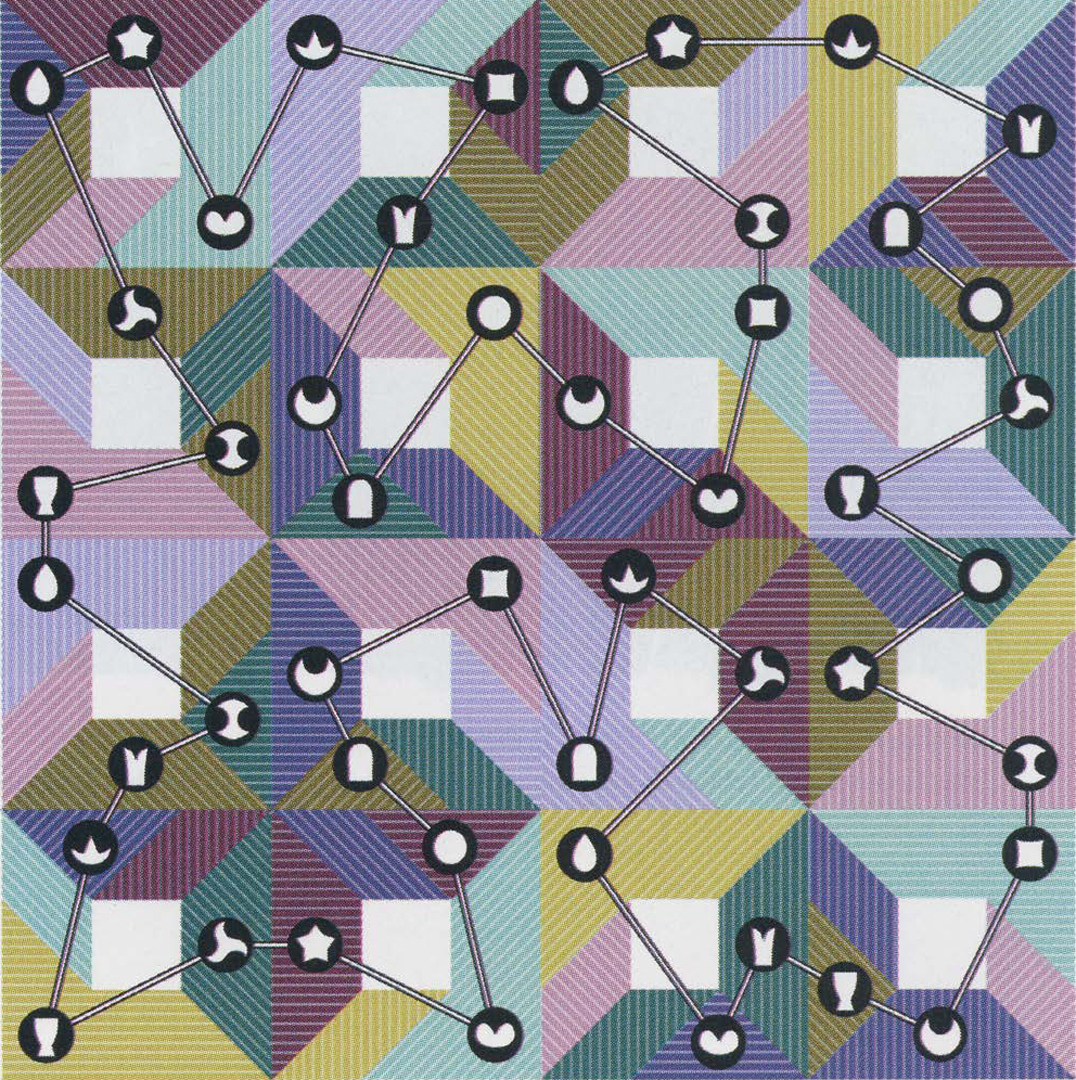Paul Hertz: Time Cycle
Artist(s):
Title:
- Time Cycle
Exhibition:
Creation Year:
- 2001
Medium:
- Somerset velvet paper
Size:
- 36 inches x 42 inches
Category:
Keywords:
Artist Statement:
Two ideas underpin the work I have done over the last 20 years: the simultaneous composition of visual and sound events, and the participation of other people in my creative process, In my precyber days, I worked with theatrical performers and musicians, Now computers and networks let me control streams of sounds and images, and involve other people in the process of creating art. Not so long ago, I found a third concern: the rupture of purely formal art by elements that expose cultural conflicts, Some of my early computer work focused directly on issues of censorship and colonialism, In my “Deadpan” series of 1996-97, I began to bring this socially critical impulse into the formal realm of my earlier work by developing compositional techniques that turn abstract elements into frames for representational or symbolic elements. Considering that the geometric tiling patterns I use in many of my compositions originated as abstracted frames (a rectangular hole inside a rectangle), this seems oddly appropriate.
The work which I am presenting in SIGGRAPH 2001, “Time Cycle,” is based on the geometric tiling patterns which I have been working on for many years, It presents one of the basic “pattern modules” which make up my larger compositions, I call these modules “ignosquares,” Each ignosquare is a 4 x 4 array of rectangular tiles, where each tile is composed of five different geometric shapes in four different configurations, The same configuration is never repeated in any row, column, or quadrant of the module.
Early on, I invented various games with cards that allowed other people to generate “ignosquares” and receive something in return – for example, a fortune told by a dysfunctional mage, or the opportunity to post their opinions to a graffiti board, The “ignosquares” would be incorporated into my paintings, Later I developed a suite of computer applications for producing large graphical compositions from “ignosquares,” The latest applications implement elements of artificial life programming, Rectangular arrays of many modules such as the one used for “Time Cycle” combine into larger compositions, with rules for coloration and creation of new shapes by merging polygons, New forms emerge as a result of this generative process, The properties of the new forms can then be used to determine the fitness of modules to survive or reproduce.
The tiling patterns and the isomorphic graphs that can be derived from them have also emerged as a compositional system for producing visual and auditory art from a common set of structures – an “intermedia art,” to use Dick Higgins’s term, “Time Cycle,” shows how coloration and texture rules can affect a single module, and shows part of the derived graph for the module, “Time Cycle” was used as the basis for a lecture I delivered at the Intersens conference in Marseille, France, in November 2000, and will be used again as the basis for a different presentation in a panel on “Digital lntermedia Art” at SIGGRAPH 2001. At Intersens, the four colors used in the composition corresponded to four different topics, and the graph traced the order in which I skipped from topic to topic, shuffling topics together in a way in which I hoped would allow ideas to rub up against one another and produce some interesting frictions, A hypertext version online provides more complex navigational possibilities.
The icons used in “Time Cycle” represent yet another layer of composition within the modules, There are twelve different icons, In the parametric spaces I use for musical compositions derived from the “ignosquares”; these correspond to the twelve tones of Western avant-garde music Here they potentially represent different aspects of society – commerce, war, crime, education, etc. Or maybe they don’t mean anything at all. In many respects, my work is less about a concrete suite of symbolic functions than it is about the impulse to create symbolic systems (polymorphous, dense, and overdetermined) as a fundamental aspect of being human,
Affiliation Where Artwork Was Created:
- Northwestern University
Other Information:
Documentation of my compositional techniques can be found on my Web site: www.northwestern.edu/people/paul-hertz/





